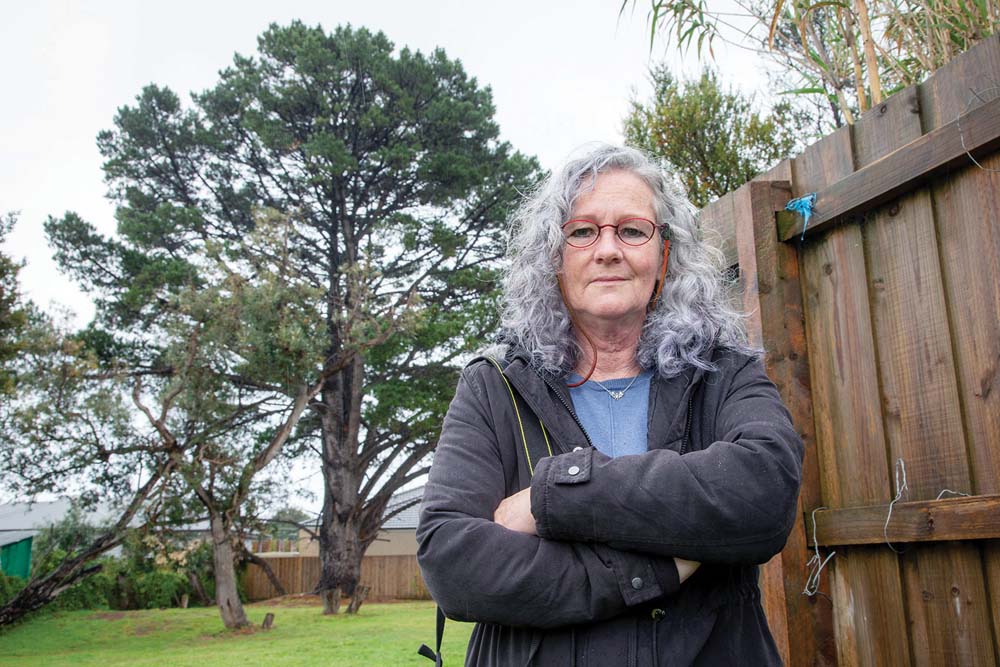
THE threatened felling of a large pine tree at the rear of a Rosebud property has neighbours fearing for the plight of an active magpie nest.
Kerry-Anne Ledwidge, of The Broadway, who lives next door to the property, says the tree is slated for removal to make way for houses – a common occurrence in the developing suburb.
Australian Wildlife Protection Council secretary Eve Kelly said while regulations required a permit from the Mornington Peninsula Shire to remove vegetation, the protection of wildlife was covered by the Wildlife and Cruelty to Animals acts.
“I would like to know how these acts are enforced when there are active nests in trees being felled,” she said.
“It has been brought to our attention that many trees in cities, suburbs and surrounding areas are being cleared, for various reasons. Many of these old and young trees, both native and non-indigenous, have active nests of native animals.
“If a tree has active nests of native birds, ringtail possum, brushtail possum or sugar gliders living in hollows or in a nest, what are the DELWP regulations regarding its removal? How are these regulations enforced? Who should concerned community members report to if there are breached regulations?”
Department of Environment, Land, Water and Planning manager Kirsty Greengrass said an exemption under the Wildlife Regulations 2013, covered offences relating to the destruction of wildlife habitat if a person was authorised to do so via an approval under any other Act.
“What this basically means is that a person who is removing native vegetation that is approved under a planning permit issued by council is not liable for offences relating to the removal of wildlife habitat,” she said.
“It is up to councils to impose conditions on planning permits and sometimes, where appropriate, these conditions will require the salvage and relocation of active nests out of trees that are planned for removal and into nearby trees within the same vicinity, such as within the animal’s home range.
“Local councils are responsible for enforcing compliance with conditions imposed on planning permits, so if you suspect someone is not complying with their conditions, you can report it to the relevant local council.”
Ms Kelly said arborists overseeing the cutting down of large trees were often not aware they were responsible for the care and safety of wildlife. “If [animals or birds] are in active nests it is against the law under the Wildlife Act to disturb them,” she said.
“Yet people are cutting down trees with active nests on the peninsula all the time. We’ve heard about possums being thrown into mulching machines, about baby brush-tails being thrown over fences.”
Ms Kelly said people should be made aware of rules surrounding the care and safety of wildlife. “There’s no point having rules unless people know about them and they are enforced,” she said.
Wildlife protector Klarissa Garnaut recently rescued five orphaned sugar gliders when a pine tree was chopped down in Balnarring. Ms Garnaut got the call from Wildlife Victoria and now has five orphaned sugar gliders in her care.
“This will come at a great personal expense to her and growing up in care is far from ideal for baby sugar gliders,” Ms Kelly said.
Ms Greengrass said a wildlife controller could be hired to remove possums, reptiles, wombats, sulphur crested cockatoos, long-billed corellas or galahs at risk of injury or death due to construction works.
For all other native wildlife, an authorisation under the Wildlife Act 1975 was required to capture, relocate or euthanise the wildlife. Anyone wishing to do so can apply to DELWP for an Authority to Control Wildlife.
It is an offence to disturb or destroy wildlife without authorisation.
First published in the Southern Peninsula News – 30 October 2018



